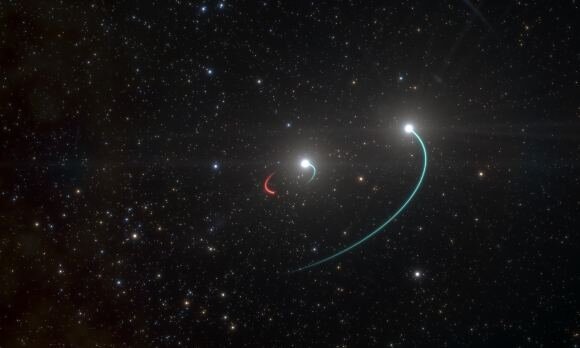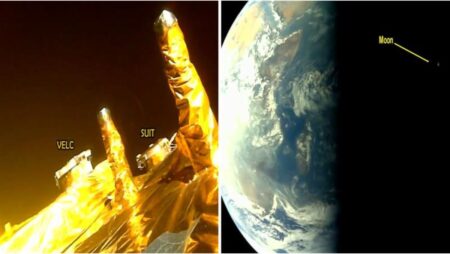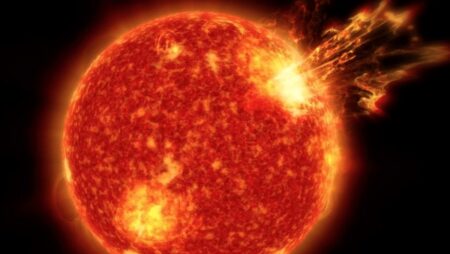Scientists have discovered a hot bubble revolving around the Milky Way galaxy’s central black hole.

HIGHLIGHTS
- The most recent black hole observation was made by scientists.
- The results were reported in the journal Astronomy & Astrophysics.
- A star’s demise results in the formation of a black hole.
Astronomers have discovered an object orbiting the black hole at the centre of the Milky Way Galaxy after initially visualising it. The evidence points to a gas bubble hot spot around the Sagittarius A*, which may provide additional insight into the dynamics of the puzzling entity.
When a star dies, its strong gravitational field causes matter to be forced into a small space beneath it, trapping the light from the deceased star. This process creates a black hole. The mass is compressed into a very small space, which is why gravity is so strong. People cannot perceive black holes because no light can escape from them.
During the campaign by the Event Horizon Telescope, which initially captured the image of the black hole, researchers used the Atacama Large Millimeter/submillimeter Array (ALMA) in the Chilean Andes to make the most recent observation of the black hole at the centre of our galaxy.
“We think we’re looking at a hot bubble of gas zipping around Sagittarius A* on an orbit similar in size to that of the planet Mercury but making a full loop in just around 70 minutes. This requires a mind-blowing velocity of about 30% of the speed of light!” says Maciek Wielgus of the Max Planck Institute for Radio Astronomy.
The polarised light curves of Sagittarius A*, a supermassive black hole at the centre of the galaxy, were revealed by the researchers in a publication that was published in Astronomy & Astrophysics. A hot gas bubble was discovered in certain studies made soon after the Chandra Space Telescope observed an X-ray flare or burst emanating from the galactic centre.
“What is really new and interesting is that such flares were so far only clearly present in X-ray and infrared observations of Sagittarius A*. Here we see for the first time a very strong indication that orbiting hot spots are also present in radio observations,” Wielgus said in a statement.
The latest data confirm the magnetic interactions in the scorching gas orbiting quite close to Sagittarius A* as the source of these flares. Astronomers can also examine Sagittarius Apolarized *’s radio emissions with ALMA, which can be used to reveal the black hole’s magnetic field.
It is important to note that the Event Horizon Telescope was used by astronomers to capture the first photograph of the black hole at the centre of our galaxy, which was released in May of this year. We are 27,000 light years away from the black hole.













